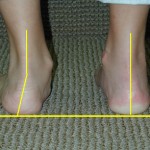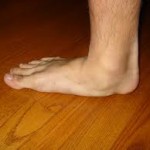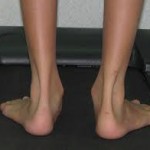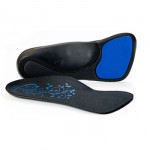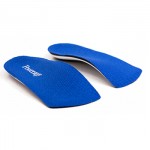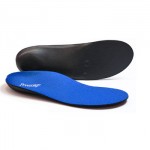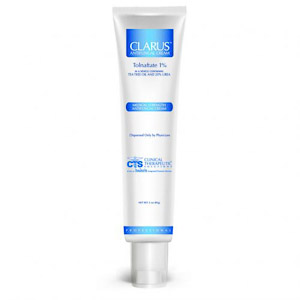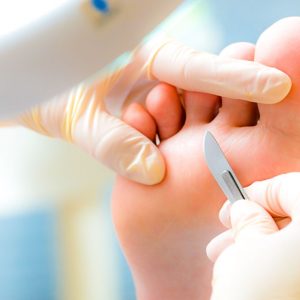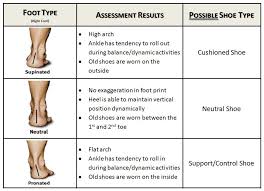
Flat Feet
Flat feet (also called pes planus or fallen arches) describes a medical condition in which the arch of the foot collapses, with the entire sole of the foot coming into complete or near-complete contact with the ground. In some individuals (an estimated 20–30% of the general population) the arch simply never develops in one foot (unilaterally) or both feet (bilaterally).
There is a functional relationship between the structure of the arch and the biomechanics of the entire extremity. The arch provides an elastic, springy connection between the forefoot and the hindfoot. This association safeguards a majority of the forces incurred during weight bearing. The foot can dissipate jarring forces before they reach the long bones of the leg and thigh.
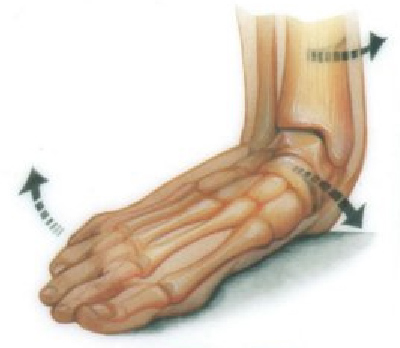
Action of pronation causing a flat foot.
In pes planus, the head of the talus bone is displaced medially and plantarly from the navicular. As a result, the spring ligament and the tendon of the tibialis posterior muscle are stretched, so much so that an individual with pes planus loses the function of the medial longitudinal arch (MLA). If the MLA is absent or nonfunctional in both the seated and standing positions, the individual has “rigid” flatfoot. If the MLA is present and functions while the individual is sitting or standing up on their toes, but this arch disappear with the foot-flat stance, the individual has “supple” flatfoot. This latter condition can be correctable with well-fitting prefabricated arch supports or custom orthotics.
- Unilateral fallen arch
- Fallen arch
- Too many toes Sign
Three studies (see citations below in military section) of military recruits have shown no evidence of later increased injury, or foot problems, due to flat feet, in a population of people who reach military service age without prior foot problems. However, these studies cannot be used to judge possible future damage from this condition when diagnosed at younger ages. They also cannot be applied to persons whose flat feet are associated with foot symptoms, or certain symptoms in other parts of the body like knee, hip, or back pain.
Flat Feet Treatment
Depending on the severity of the flat foot or feet and symptoms, there are many treatment options available. Conservative treatments usually include Lowe Dye Strapping ( a taping technique) and arch supports (orthotics). In some cases surgery is necessary, the etiology of the flat foot deformity, will dictate the surgical procedure performed.
- Powerstep Slender Fit
- Powerstep slimtech
- Powerstep full length
Much of the time orthotics are able to control the excessive pronation and related symtoms. Check out these Podiatrist Recommended Orthotics or custom functional orthotics

